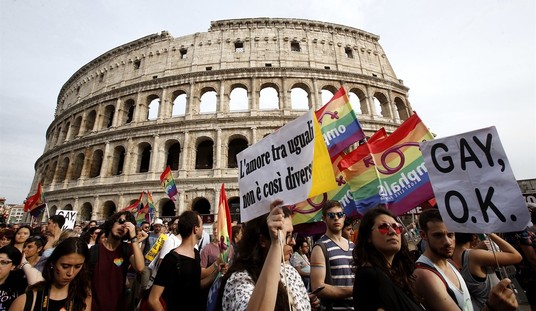The news is depressing these days as people fear losing their homes or jobs and worry about family members deployed in military operations overseas. So what are members of Congress worried about? They fear the “grave” threats posed by--bottled water. Now that’s crazy.
Supposedly consumers are at risk from, or are being duped about, bottled water quality. Lawmakers think the solution is more detailed labeling mandates that include listing the traces of chemicals that water might contain.
We don’t ask other food producers to list every possible contaminant in their products. In fact, FDA regulations actually allow a certain level of impurities including rodent hairs, cockroach parts, and fly wings in foods like flour.
You don’t read that on the label. Why? Because absolute purity is impossible and unnecessary from a public health perspective.
And when you are talking about trace level chemicals in bottle water, it’s even more irrelevant. These contaminants exist at such low levels that they pose negligible risks, which is why FDA does not fuss over them.
Yet government officials rant and take up such “causes” to gather green political points. In this case, they enlisted the help of their very own “independent” research arm: U.S. Government Accountability Office (GAO). The same day of the hearings, GAO released a conveniently-timed, report on bottled water to buttress the lawmakers’ alarmism.
The GAO report recommends increased labeling of bottled water to report chemicals that appear in the parts-per-billion range. But GAO’s recommendation is a policy judgment. It is not supported with data proving that bottled water poses significant risks under current regulatory practices or that more bureaucratic reporting of essentially meaningless data would matter.
The GAO study did not assess bottled water’s safety. Instead it compared EPA regulations of tap water to FDA regulations of bottled water, which it found to be basically the same, except that FDA also applies food safety and packaging regulations. It suggested that FDA implementation was weaker than EPA, but it did not assess performance–the quality of bottled water verses tap.
Recommended
Lawmakers used GAO value judgments to suggest that bottled water was no different than tap water and that it might even be less safe. As well documented in CEI’s study found on our enjoybottledwater.org consumer website, the facts do not support that contention.
In terms of safety, both tap and bottled water are generally good, yet available data indicates that bottled water has a better safety record. If you compare health-related problems that have been connected to both bottled and tap water, tap water has more documented health-related incidents by factors in the tens of thousands.
For example, one EPA study documents a total of 207 waterborne-disease outbreaks producing 433,947 documented illnesses and 73 deaths between 1991 and 2002. Most of these cases were the result of a major outbreak of the pathogen cryptosporidium in Milwaukee’s tap water during 1993, which produced 403,000 illnesses and 50 deaths. The study also notes that waterborne illnesses are increasingly linked to distribution of tap water via pipes, where it becomes contaminated. In contrast, bottled water is distributed sanitary packages that ensure quality during distribution.
In contrast, “there has not been a documented major outbreak of illness from bottled water in the U.S.,” says Amy Simonne, Assistant Professor for Food Safety and Quality at the University of Florida notes.
The fact that there hasn’t been a major outbreak does not mean there are no isolated cases of individual problems or small-scale outbreaks. The CDC reports a handful of cases over the past several decades in their reports on waterborne illnesses in Morbidity and Mortality Weekly Report. Such problems occur in the tens—not the tens of thousands as with tap water. There are also, periodic recalls of bottled water because of trace chemicals found, but few health problems.
And according to EPA, the risks of tap water are underestimated. In fact, agency officials believe that millions of Americans suffer from acute gastrointestinal illness (diarrhea) every year from drinking tap water. Not surprisingly, the CDC recommends bottled water for people with compromised immune systems.
As a result, government mandate labeling won’t make the water safer, and it won’t educate consumers on the risks. However, new bottled water labeling regulations will increase paperwork, bureaucracy, and waste money. But then Washington specializes in those things.

























Join the conversation as a VIP Member